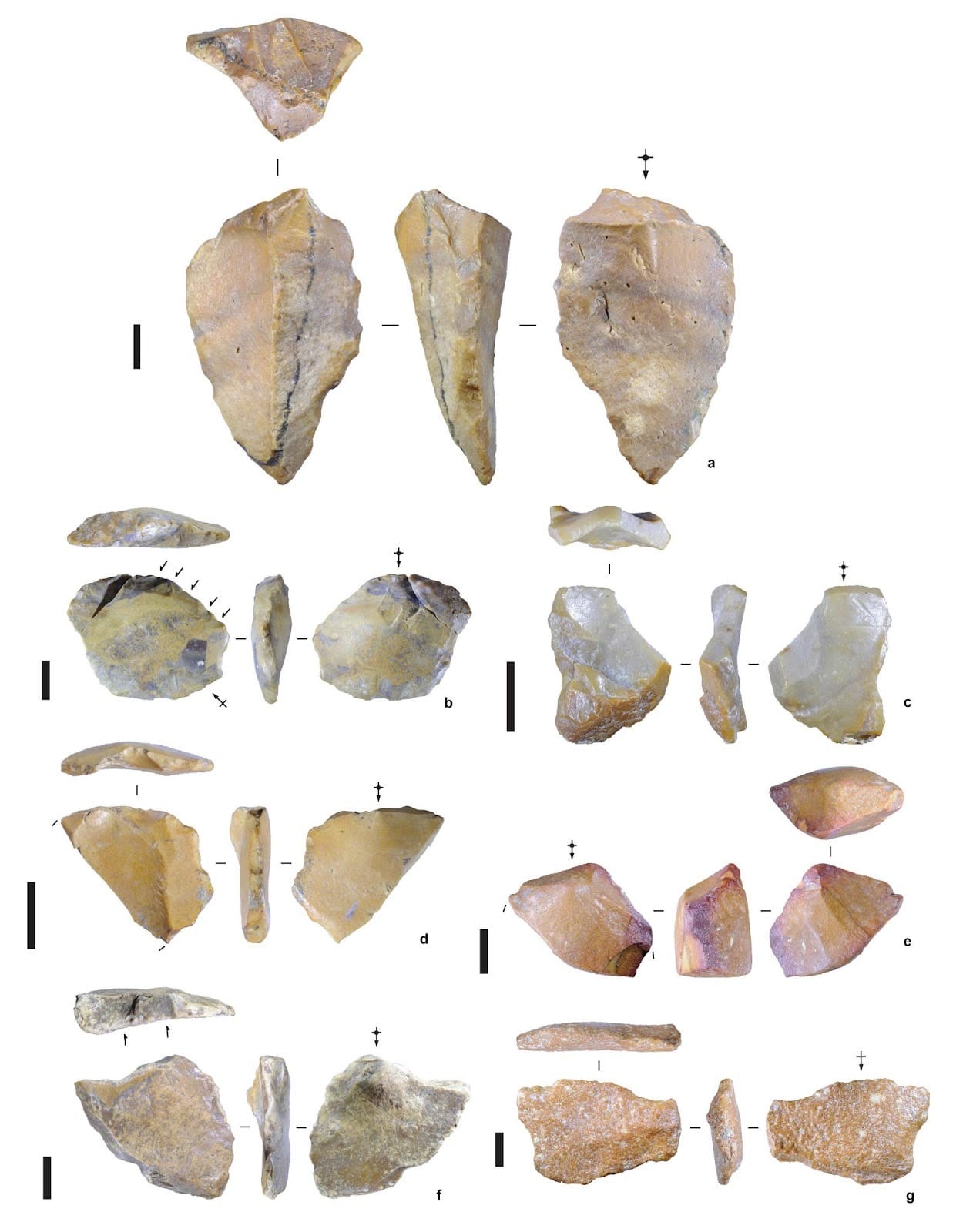
Scientists have discovered million-year-old artifacts made by a mysterious group of early humans on the Indonesian island of Sulawesi, according to a breakthrough study published on Wednesday in Nature.
The extraordinary find pushes the archaeological record of Sulawesi back by about 800,000 years, and confirms that hominins, the broader family to which humans belong, crossed treacherous ocean passages to reach the island, where they crafted simple tools.
The tool-makers may have been related to a group of archaic humans—nicknamed “hobbits” for their short stature—that lived on nearby Flores Island. But while the hobbits left behind skeletal remains, no fossils from the Sulawesi group have been unearthed. The tools, found at a site called Calio in South Sulawesi, are the only record of their existence for now.
“The discovery of these ancient stone tools at Calio is another important piece of the puzzle in our understanding of the movements of early hominins from the edge of the Asian landmass into the isolated zone of islands known as Wallacea,” said Adam Brumm, a professor of archaeology at Griffith University and a co-author of the new study, in an email.
“A major question remaining is the identity of the archaic humans of Sulawesi,” he added, noting that they might be Homo erectus, or descendents of this influential early human species that migrated from Africa to Asia. ”But until we have their fossils, who they were will remain a mystery.”

The discovery was made by Budianto “Budi” Hakim, an Indonesian archaeologist who has spent decades searching for traces of archaic humans in Sulawesi. Hakim spotted one of the artifacts while scouring the region’s sandstone outcrops, prompting an excavation that unearthed a total of seven flaked tools crafted from chert rock. The remains of extinct elephants and pigs were also found in the sedimentary layers at the site, hinting at an ancient origin.
The team used two independent methods to date the tools, both of which placed their age at a minimum of 1.04 million years old, making the artifacts the earliest evidence for hominin occupation of Sulawesi by far.
“Budi has been searching for this evidence for much of his life, so it is very exciting indeed,” said Brumm. “But it is not so surprising that we now have evidence for hominins on Sulawesi by one million years ago; we have long suspected that there had been a very deep history of human occupation of this island based on the discovery (in 2010) of stone tools on Flores to the south that date to at least a million years ago. Sulawesi was probably where the first hominins to set foot on Flores actually came from, so it made sense to us that the human presence on Sulawesi would go back at least as far as a million years, if not considerably earlier.”
“And personally, it did not surprise me that Budi unearthed this new find,” he continued. “He is a renowned figure in Indonesian archaeology and undoubtedly has the ‘golden touch.’”
The tools are sharp-edged flakes that were probably cut from larger rocks obtained from a nearby river channel. Like many tools made by hominins across time and regions, they would have been useful for cutting and scraping materials, though their exact purpose is unknown.
The tools “can’t tell us very much about the behaviour or cognitive capacities of these early humans, other than that they were tool-makers who clearly understood how to choose stones with suitable properties and to fracture them in a controlled way to produce a supply of usable tools,” explained Brumm. “Over the past 2.5 million years, many different hominin species (including our own, Homo sapiens) have made stone tools that are essentially indistinguishable from the Sulawesi tools.”
In addition to their mysterious identity, it is unclear how these early humans crossed ocean waters to reach these island shores, given that the shortest distance between the Asian mainland and Sulawesi would have been 30 miles, at minimum.
“This is too far to swim (in any case the ocean currents are too strong),” Brumm explained. “It is also very unlikely these archaic hominins had the cognitive ability to develop watercraft that were capable of making sea voyages, or indeed of the advanced planning required to gather resources and set sail over the horizon to an unseen land.”
“Most likely, they crossed to Sulawesi from the Asian mainland in the same way rodents and monkeys are suspected to have done; that is, by accident, perhaps as castaways on natural ‘rafts’ of floating vegetation,” he concluded.
It’s incredible to imagine these early humans getting caught up in tides or currents, perhaps stranded at sea for days, only to serendipitously wash up on a vast island that would become home to untold generations. Hakim, Brumm, and their colleagues hope to find more evidence of this long-lost population in the coming years, but for now, the stone tools offer a rare window into the lives of these accidental seafarers and their descendants.


